There was a time when health and fitness apps were little more than glorified step counters. Count your calories. Log your jog. Maybe track your water intake if you’re feeling fancy.
That era is over.
In 2025, health & fitness apps have become something else entirely: personal trainers, nutritionists, sleep coaches, mental health allies, and community hubs—all packed into one screen. Users now expect their fitness app to know them better than their doctor and motivate them better than their trainer.
But while users are sweating it out, most business founders are still sweating over revenue.
Because in this saturated, highly personalized market, monetizing a fitness app is not only about throwing in a subscription button or sprinkling ads between yoga flows. It’s about designing value ecosystems where data, habit loops, motivation, and trust align to generate real, sustainable income.
Whether you’re building a meditation platform, an AI-powered workout coach, or a holistic health tracker, 2025 demands smarter monetization strategies that rise above the market noise. And this blog is your blueprint for that shift.
We’ll decode emerging consumer trends, effective app monetization strategies for health & fitness apps that drive revenue. And we’ll also spotlight what the top fitness apps are doing differently to scale with integrity and impact.
So if you’re building a health or fitness app that aims to be more than just “another tracker,” you’re in the right place.
Table of Contents
Current Market State of Health & Fitness Apps in 2025
The health & fitness app market is thriving tremendously. It is fueled by a culture shift that no longer views wellness as a luxury but as a non-negotiable. The usage boom isn’t limited to workouts. Meditation, sleep, period tracking, chronic care, men’s health, and hormonal health apps are expanding rapidly.
In fact, there has been a 32% growth in mental wellness app downloads on a yearly basis, hinting at the unmistakable fact that users are looking for a holistic approach rather than just a fitness program. According to Business of Apps, revenue in fitness apps hit USD 3.98 billion in 2024.
Gen Z and Millennials are driving this surge. They are willing to try new health and wellness apps if they appeal to a great extent in a real, tangible, emotional way. As far as retention is concerned, that is highest when users see health-related results overlay quickly in real-time through a visual registration socially.
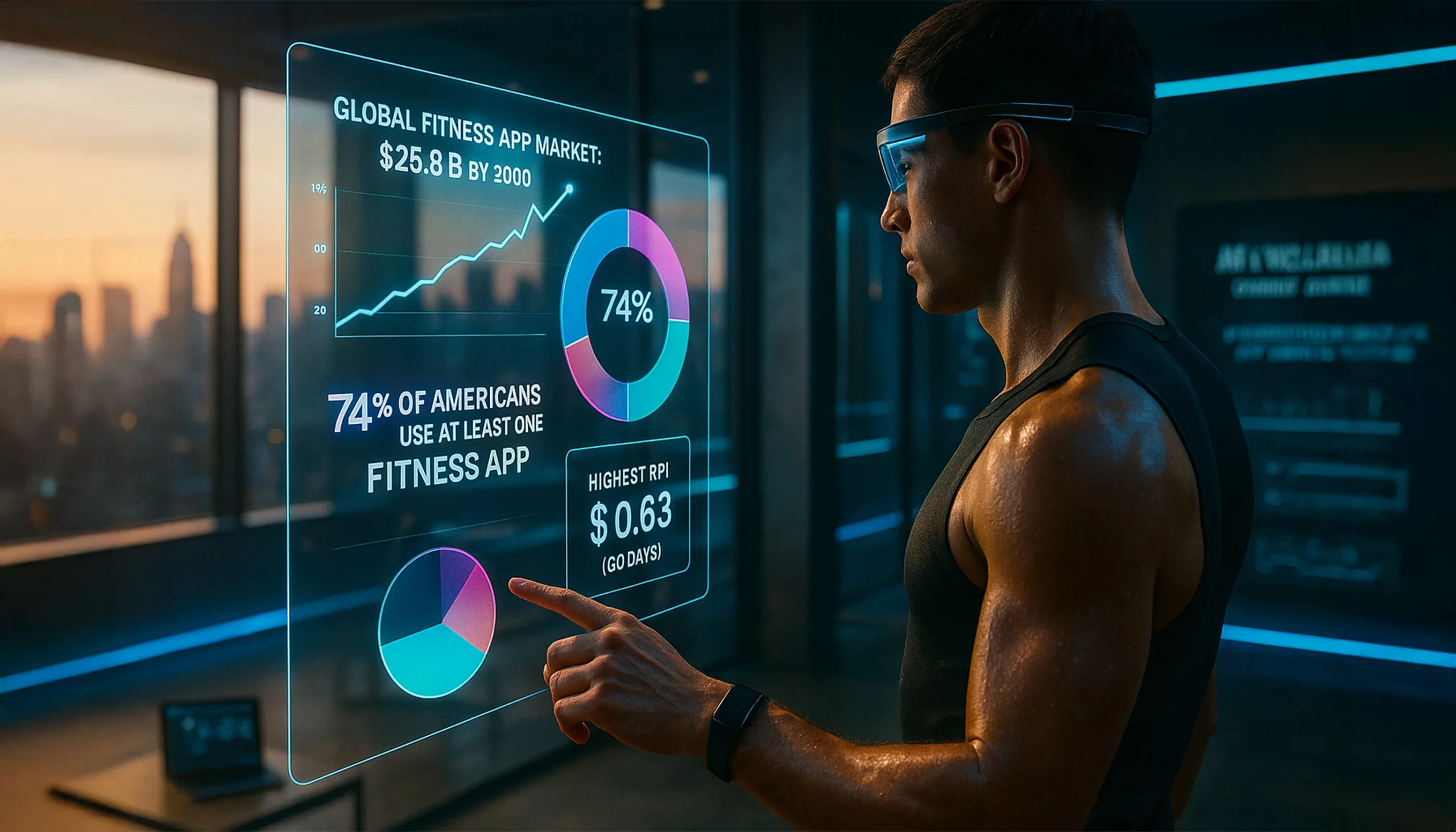
Rise of Personalized Health: AI, Wearable Integration, and Real-Time Coaching
The year 2025 raises the above trend of making personalized healthcare experience a dominant one, among the existing trends in the fitness app arena. Now, healthcare mobile app development companies are using AI to create high-end features for health & fitness tracking apps. For instance, learning from sleep cycles, mood logs, glucose levels, or even from vocal tone to trigger intelligent wellness interventions.
The data stream is yet enriched with information from smartwatches, fitness bands, and even smart rings. Many active users in the top fitness apps now expect to see their apps integrated with the wearable independently. And the best apps turn this data into dynamic health journeys that evolve with changes in health.
What Users Are Willing to Pay for Now (And What They’re Not)
Consumers have a willingness, but only conditional willingness, when it comes to paying any price in 2025. Consumers are more awake and intelligent than ever. They need value. When it is given, they pay it back in the long run.
The way to make money is through attracting users before charging: this remains the secret. Subscription is still a viable monetization method, but only if the subscribers find daily value and perceive it so. Users will pay for:
- Hyper-personalized plans (tailored to age, condition, or goal)
- Accountability layers (coaches, group challenges, progress trackers)
- Integrated ecosystems (apps that manage more than one wellness goal)
Top App Monetization Models for Health & Fitness Apps That Actually Work in 2025

Here’s a closer look at the app monetization strategy top health and wellness platforms are using to earn without feeling like they’re selling.
1. Freemium 2.0: Beyond Basic and Premium
Gone are the days of “basic free” vs “everything behind a paywall.” Freemium in 2025 is about value staging. This app monetization strategy offers just enough transformation in the free version to build trust while guiding users toward premium tiers that feel like a natural next step. Here is what’s working now:
- Smart feature gating: You let the user complete their first 7-day habit, then unlock streak tracking or advanced coaching.
- Community-led upgrades: Peer groups, progress leaderboards, and coach shoutouts drive FOMO-led conversions better than any CTA button.
2. Subscription Models
Yes, subscriptions still work. But only when they feel flexible, fair, and frictionless. Below are the winning app monetization strategies for health & fitness apps that proven to be worked in 2025:
- Hybrid tiers: Mixing weekly, monthly, and even milestone-based unlocks gives users control (and kills churn).
- Pricing psychology: Presenting options as outcomes (“Unlock your personalized sleep score”) instead of cold prices converts better.
- Trial-to-paid flows: The best Proven mobile app monetization strategies use a 7-day success challenge that ends with a prompt—“Want to keep your momentum going?”
3. In-App Purchases & Microtransactions
In-app purchases and microtransactions are among the top fitness app monetization models. These microtransactions scale revenue without forcing commitment. Health & fitness apps in 2025 are embracing modular, pay-as-you-need experiences. But integrating this model requires a dedicated approach. Therefore, the smart move would be when you work with a custom app development company to create a customized architecture to integrate this model into your app.
4. Pay-as-You-Go & On-Demand Coaching
This model plays into one core truth: people want real support, not just data. Users pay for what solves their problem now. And the beauty? You monetize without ever needing a one-size-fits-all tier. You can charge your users for various features under a Pay-as-You-Go model. For instance,
- Live video sessions with nutritionists
- Text-based chats with a fitness expert after completing a milestone
- Audio-guided mental health check-ins powered by AI + human touch
5. Affiliate & Partnership Revenue
If your app helps people sleep better, move more, or eat cleaner, there’s a brand out there that wants in. And users don’t mind, as long as the recommendation is relevant and ethical. This stream is low effort, high trust, and when done right, aligns beautifully with a user’s transformation journey. At present, top apps are recommending smart scales, protein subscriptions, wearables, or meditation aids.
6. Licensing & B2B Opportunities
This is the quiet monetization engine that more founders should be paying attention to. This B2B track might not show up in app store revenue, but it unlocks scale and resilience. For many startups, this is the app monetization model that turns survival into long-term success. If your app has a proven model, you can:
- License it to gyms or fitness franchises as white-label wellness tech.
- Offer dashboards to corporate wellness programs.
- Partner with insurance platforms to improve patient engagement.
7. Content as a Product: Monetizing Creator-Driven Wellness
We’re witnessing the rise of the wellness creator economy inside apps. Leading platforms are now onboarding certified fitness coaches, therapists, nutritionists, and even wellness influencers to create premium mini-programs, sold or subscribed to inside the app ecosystem.
It’s sticky. It scales. And it taps into the same “creator economy” driving growth on platforms like Substack, Patreon, and YouTube—just applied to health. If you’re planning long-term growth, creator-driven monetization is a new vertical. This model turns your app into a marketplace:
- Users subscribe to creators they trust
- Creators earn via profit-sharing
- Your app earns as the platform
Read Also : How AI in Healthcare Apps Can Help You Enhance Patient Care?
Powerful Tips to Design an App Monetization Strategy That Converts
Most fitness apps may not have a problem because of bad ideas. Indeed, they fail because of the improper alignment of monetization. For your health & fitness apps to generate sustainable income, more is needed than simply tacking on a pricing plan. At present, healthcare startups and entrepreneurs are interested in innovative fitness app ideas that bring substantial revenue.
If you are also looking to monetize your fitness platform effectively, you should integrate the monetization strategy into the very core of the product. Being a leading fitness app development company, we are aware of how to put it right.
1. Aligning Monetization with App Mission & User Life Cycle
Start here or lose everything. Your monetization model should flow naturally with whatever transformation the app promises, never slowing down or distracting from it.
Therefore, if the goal of your application is to focus on helping busy moms reclaim energy, do not slap them with a $59/year plan right after onboarding. Offer them a 7-day “energy reboot” plan, track their progress, build up trust, and then sell them on a monthly wellness journey to keep that momentum going.
It should be the price linked with the progress so that users feel they are paying for their evolution and not just for unlocking features. The best monetization strategy in health &fitness apps is not aggressive, but empathetic. At the peak emotional moment of the user, an offer that respects this peak moment is provided.
2. Crafting Irresistible Value Propositions
Features Do Not Sell-Outcomes Do. To make an offer convert, step back and work on what the user will become as opposed to what your app will do for him/her. You are not selling “custom workouts” or “meal tracking.”
Once you discover the value or emotion associated with your app, you want to buttress your pricing toward that. For example, instead of $8.99 per month for unlimited features, say $2.24 a week for Your 30-day self-reset. Then it feels like transformation, not a transaction.
Successful app monetization approaches of 2025 are emotionally resonant. They bind together where the user is and where they want to go-and then paying almost feels like a step forward from there.
3. Using Behavioral Analytics to Time Offers and Upsells
Timing matters most. Instead of asking users to upgrade every Day 3, what if the app waits for them to hit their third milestone, share their very first progress photo, or complete a hard workout streak? That’s where behavioral analytics comes in. It helps you find high points of motivation in the user’s journey and puts your upsell there.
Apps powered with an astute data approach are creating micro-moments nowadays- micro-moments that trigger personalized nudges or upgrade offers or invitations to exclusive parties that drop only when the user’s signals scream, “I’m ready.”
Here’s where health & fitness app monetization models are elevating their game in 2025-not by screaming louder but by listening better. Conversion becomes effortless when you offer the right value, at the right time, to the right person.
What the Top Earning Fitness Apps Are Doing Differently?
The fitness app market is crowded with competitors, but a few names continue to surge above the rest-not only by downloads but by revenue. Because their fitness tracking apps are built with intent, personalization, and precise monetization. Here is a closer look at what these few earners are doing differently, and how you may borrow some of their ideas for monetizing your own fitness apps.
1. Fitbod: Personalization Comes First
Fitbod doesn’t just throw workouts at users. It constructs your training plan based on performance history, equipment access, and fatigue level. Every movement, set, and rest period is designed just for you. Such tailored value almost demands the upgrade to premium. In fact, it almost feels like an option not to purchase it.
Most applications set the paywall before proving value, but this application is the reverse. You get just enough free experience to feel the results, and then it hits you with the question: “Want to keep progressing?” This is truly a masterclass in app monetization designs that are aligned with user goals rather than interrupting them.
2. Headspace: Mental Fitness as Self-Care
Headspace stands among the top-grossing health & wellness apps in the US market, and with good reason. Scarce design and celebratory nudges build an emotional connection with the user before even thinking of asking for the subscription.
In addition, their subscription bundles include options for use beyond just the individual families, corporate wellness integrations, and even student pricing. Their monetization strategies are all compassionate and scalable, never abrasive.
3. Centr by Chris Hemsworth: Celebrity + Habit Engine
Centr blends celebrity influence with full-stack wellness: workouts, meals, meditations, and daily goal setting—all inside one ecosystem. What sets it apart is how it creates urgency and community: weekly challenges, coach check-ins, and app-wide events drive engagement spikes—perfect moments for upsells and renewals.
4. MyFitnessPal: Free Utility, Premium Intelligence
One of the most downloaded health apps globally, MyFitnessPal, starts as a simple calorie tracker. But what users really pay for is insight. It’s a powerful example of app monetisation models for health & fitness apps that lean on data unlocks rather than content gating. Users don’t mind paying when it makes their progress smarter, not harder. The premium version unlocks:
- Macro nutrient analysis
- Meal-time recommendations
- Custom goals based on trends
Conclusion
In 2025, the fitness apps winning today aren’t the ones throwing every feature at the screen and hoping something sticks. They’re the ones which solve real human problems—better sleep, stronger bodies, calmer minds—and design business models that reflect that value. So, whether you’re refining your current product or building the next big thing in wellness tech, you should smartly integrate an app monetization model in your health & fitness app.
And the best way would be to consult a highly experienced mobile application development company like RipenApps that specializes in building revenue-generating apps for the health & fitness industry. We have a proven track record of delivering high-grossing fitness platforms that have set new benchmarks in the industry.
FAQs
Q1. What monetization models do fitness apps most commonly use in 2025?
The top fitness apps run a blended monetization model, tiered subscription system (freemium, with paid upgrades), IAPs (meal plans, workout packs), affiliate partnerships (wearables, supplement brands), to sponsored challenges. The point is to spread revenue sources while maximizing the value perceived by the user for each product.
Q2. Can in-app purchases (IAPs) boost fitness app revenue?
Yes, they do. Many fitness apps sell IAPs for consumable content like customized workout plans, meal guides, or test kits. These micro-payments cater to customers who want quick value without long-term commitment and might grossly increase per-user revenue.
Q3. Do any fitness apps earn through advertising or sponsorships?
Yes. Some freemium apps display ads through the app or show sponsored content from workout brands and health companies. The challenge is to make the advertisements so seamless and relevant that they do not hamper the user experience.
Q4. How much revenue can a fitness app generate?
That depends on a lot of things, but the major fitness apps (Fitbit, MyFitnessPal, Sweat) earn somewhere between $50M and $150M annually, through subscriptions, IAPs, affiliate selling, and ads.
Q5. Should I prioritize subscriptions or ingrain AI for higher premium pricing?
Both. Subscription is the baseline model. However, AI, when used for personalization (adaptive workouts, real-time coaching), can contend for premium-tier pricing while helping significantly with conversions.


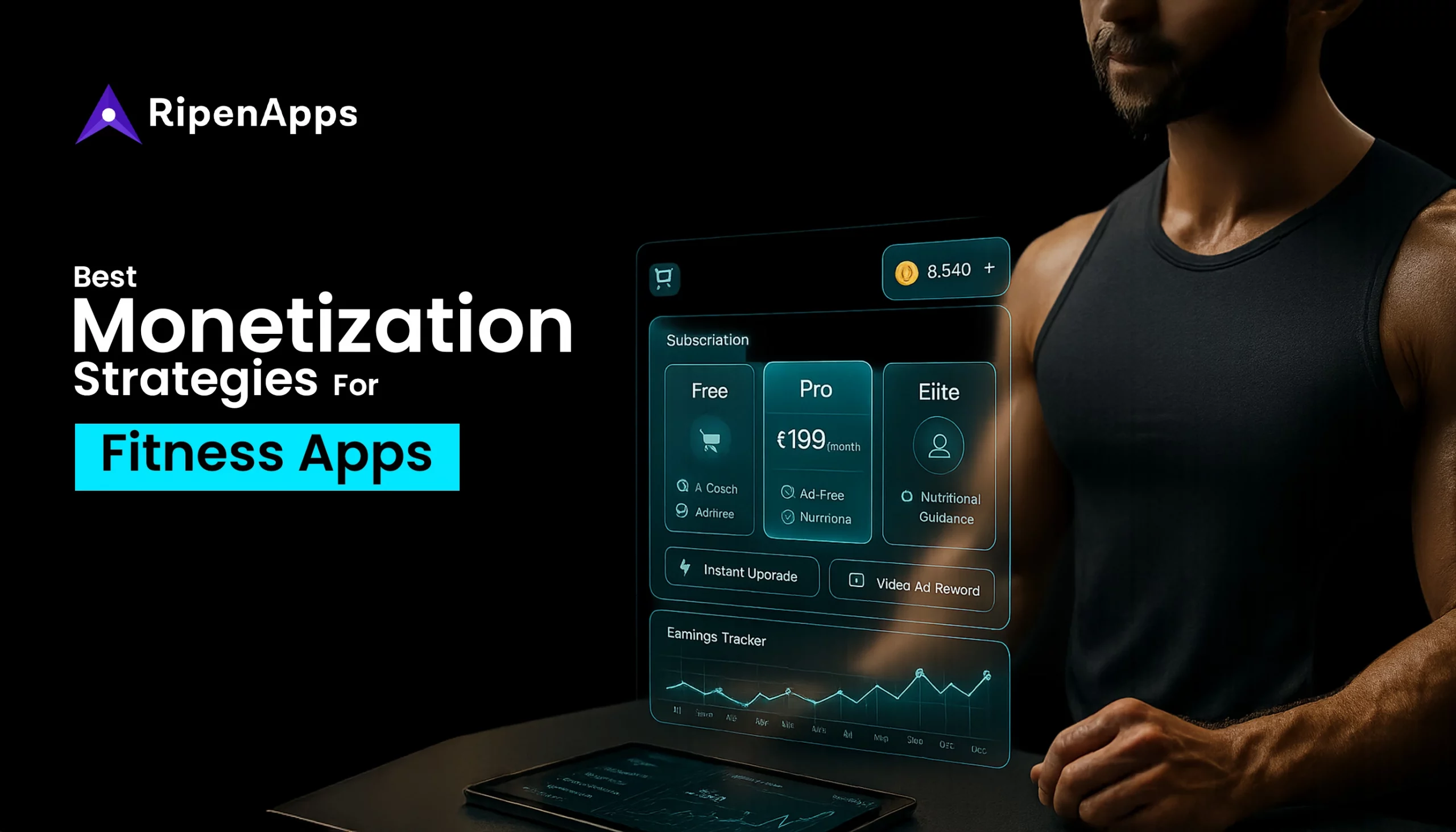





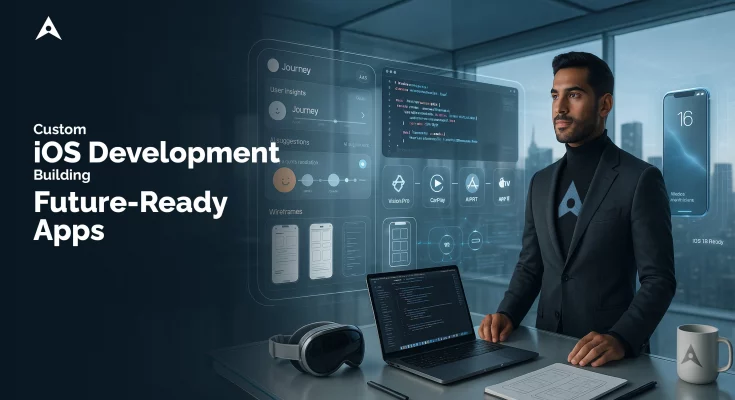
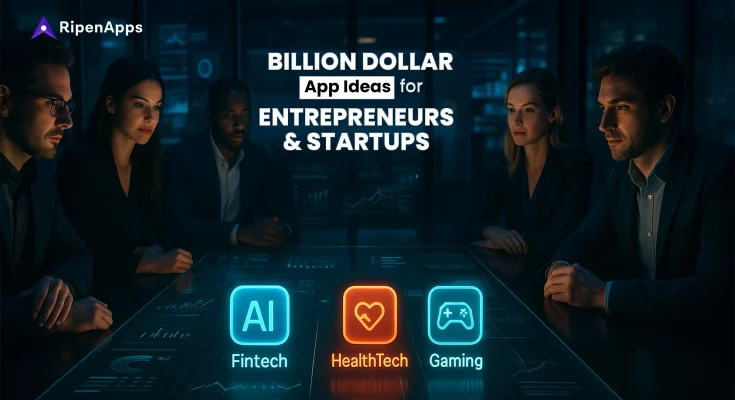
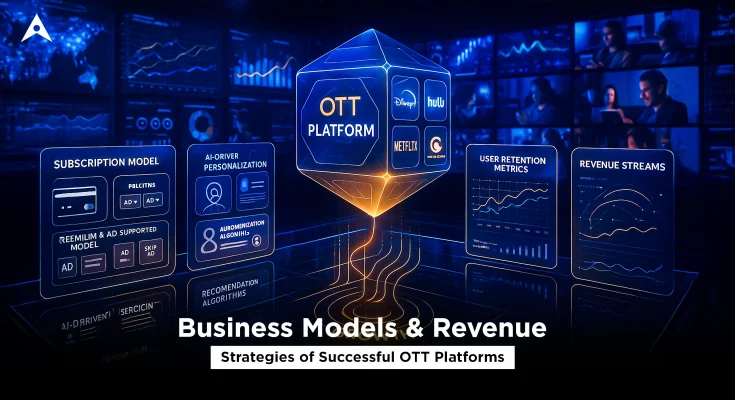

 India
India USA
USA Australia
Australia Canada
Canada UK
UK UAE
UAE
